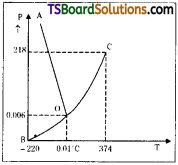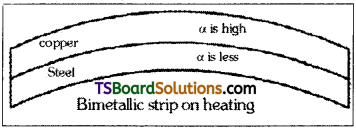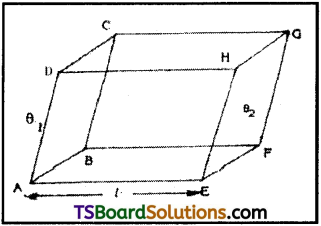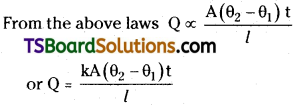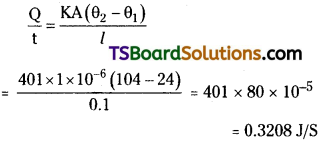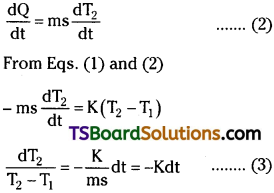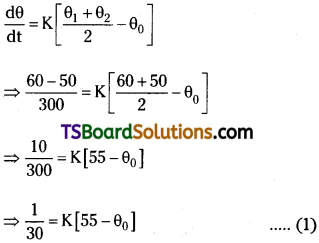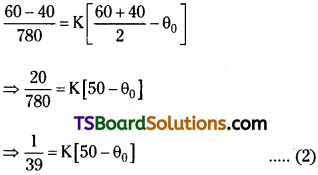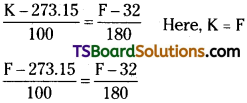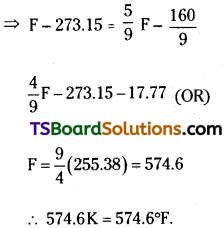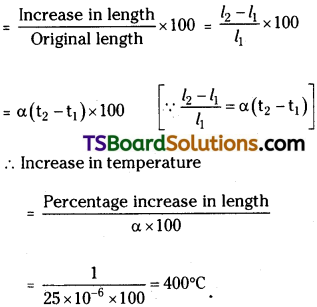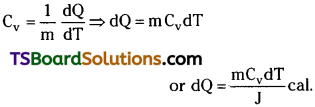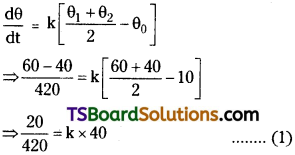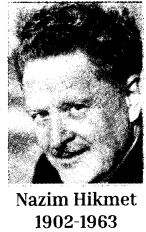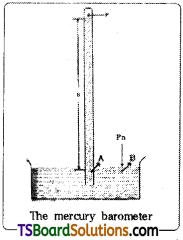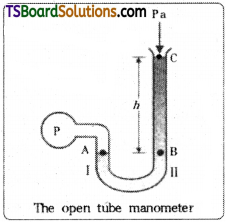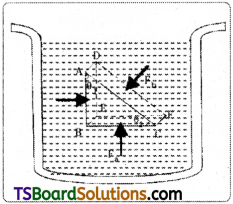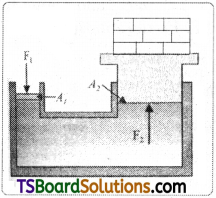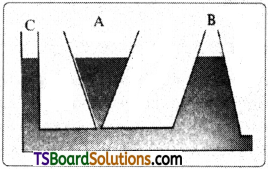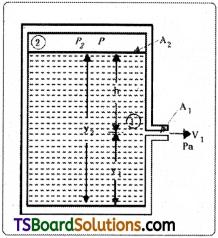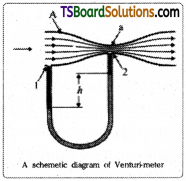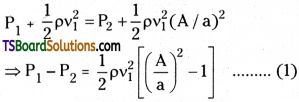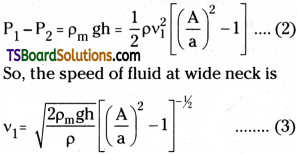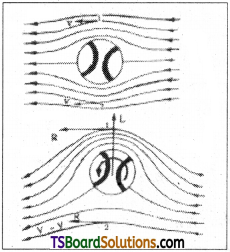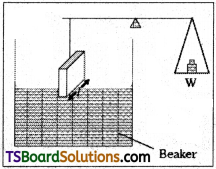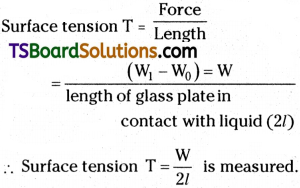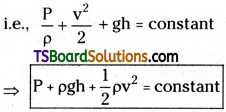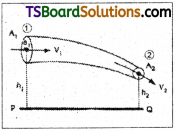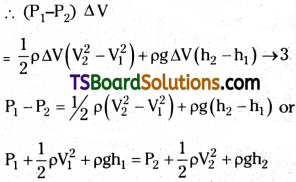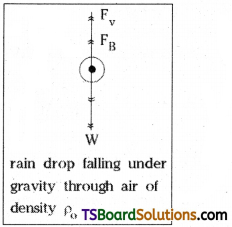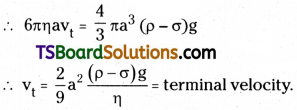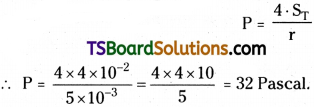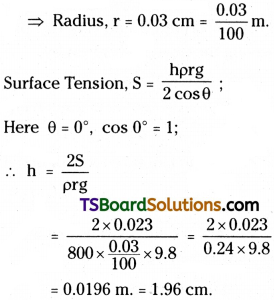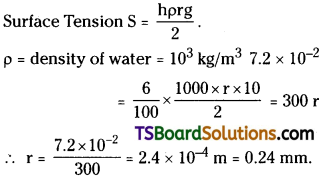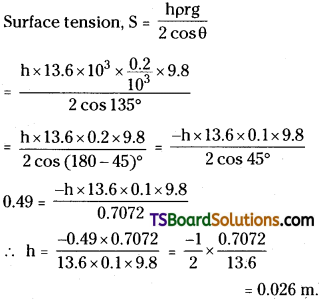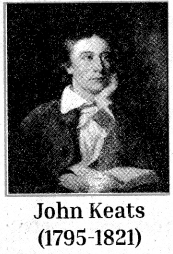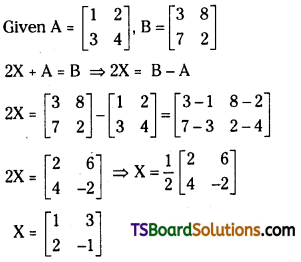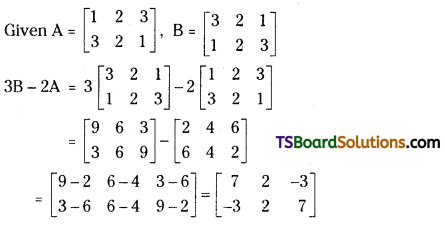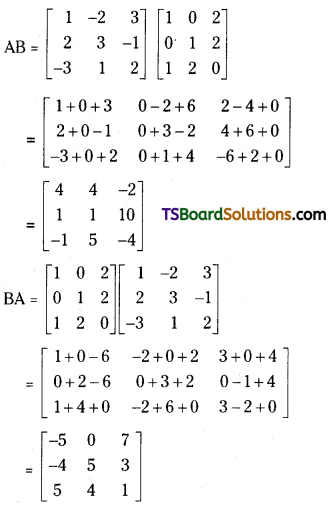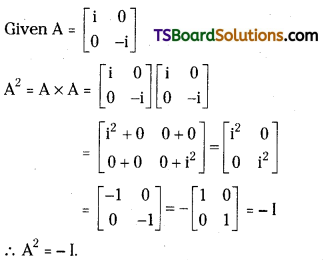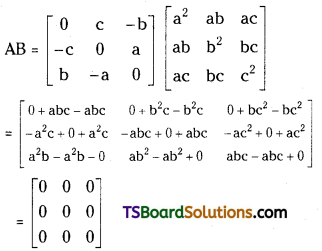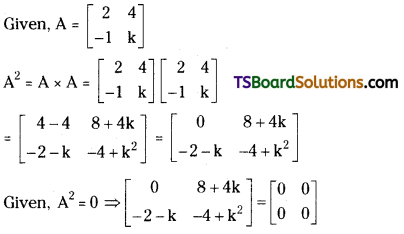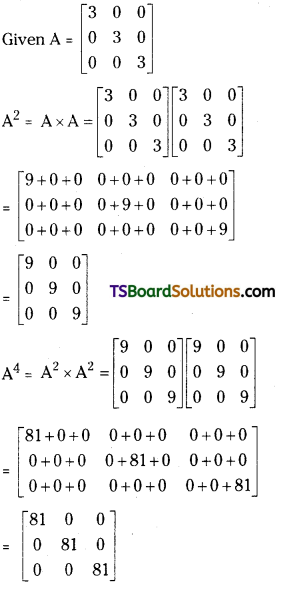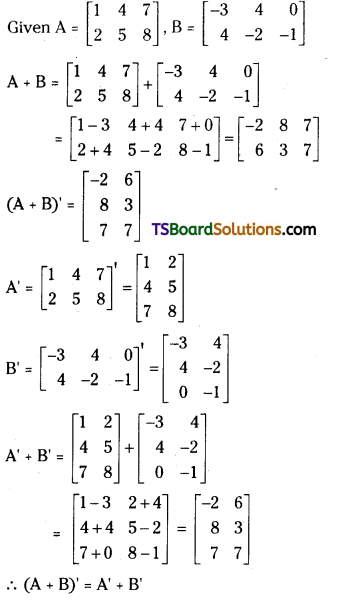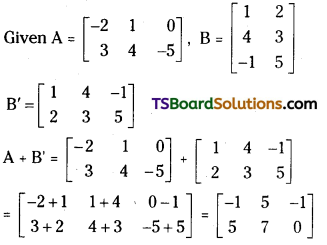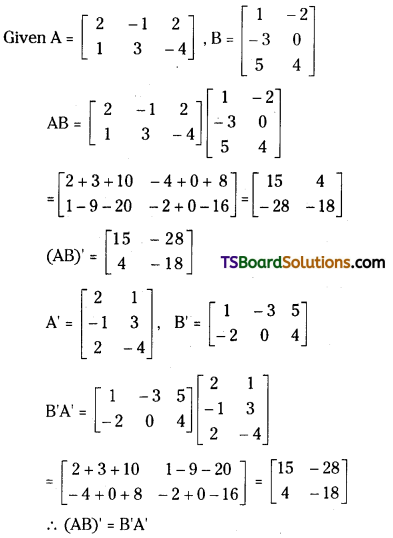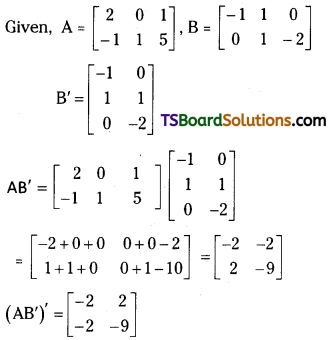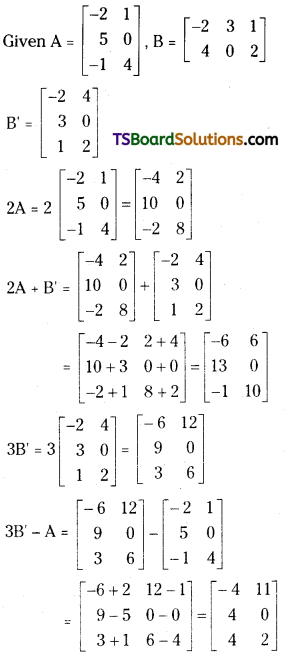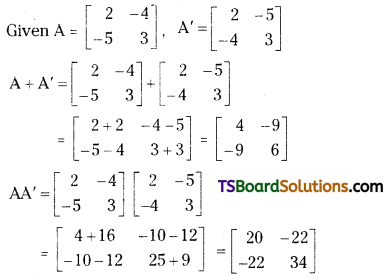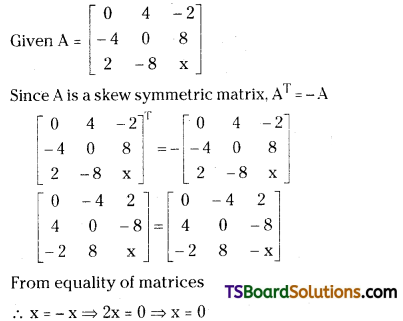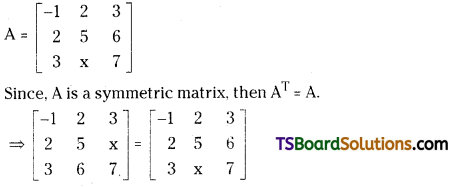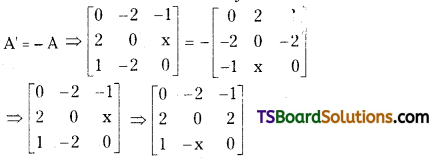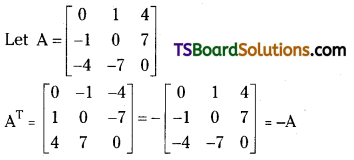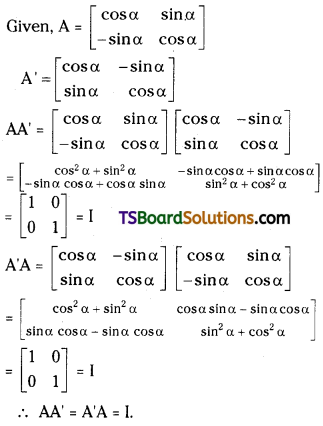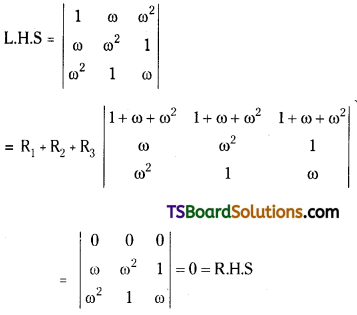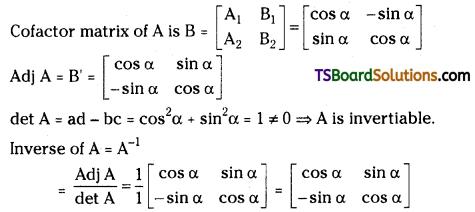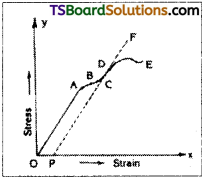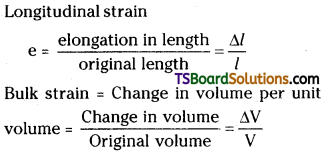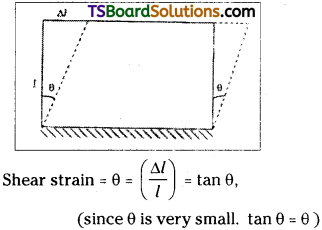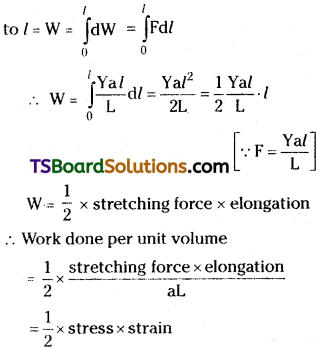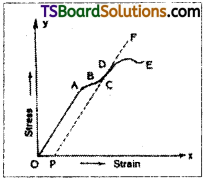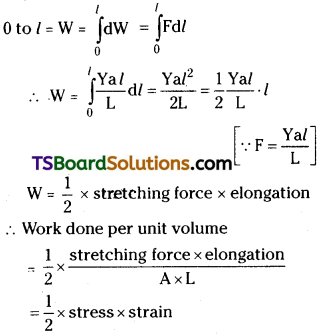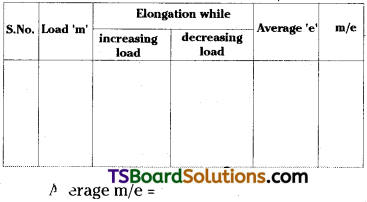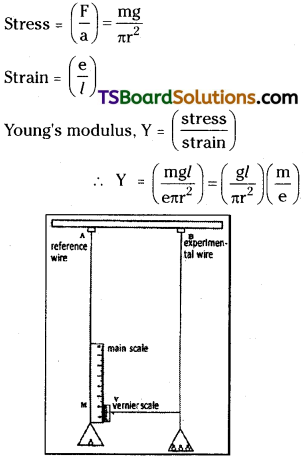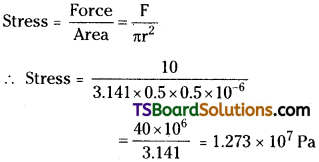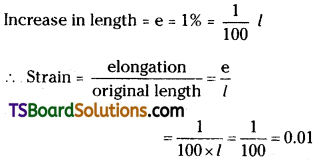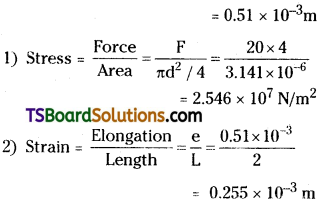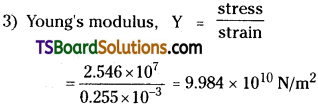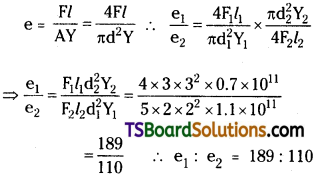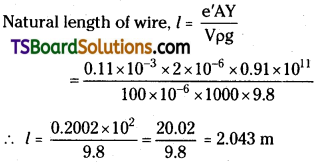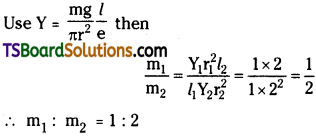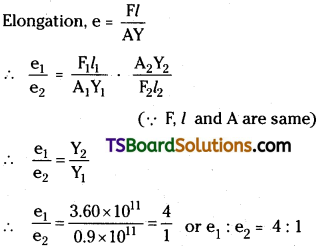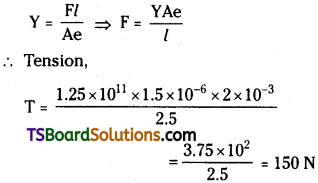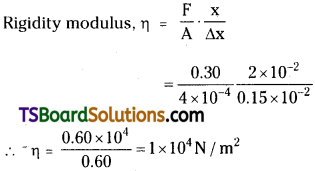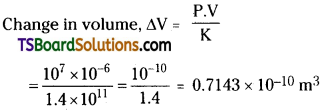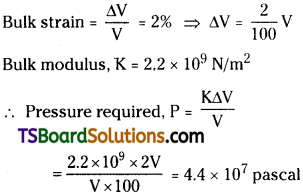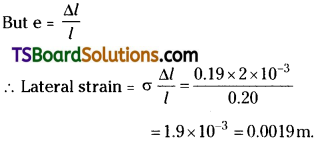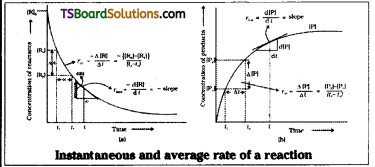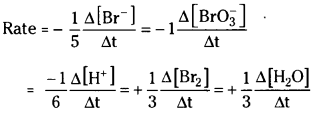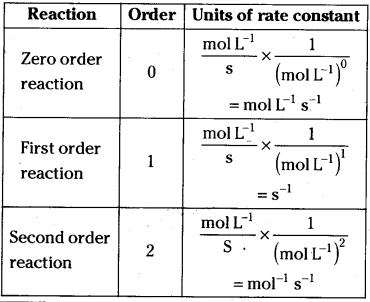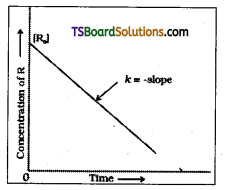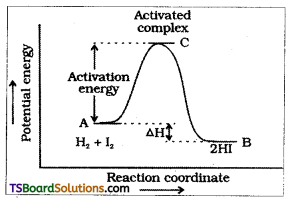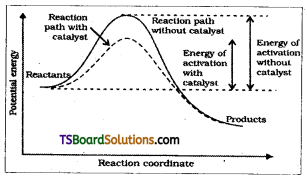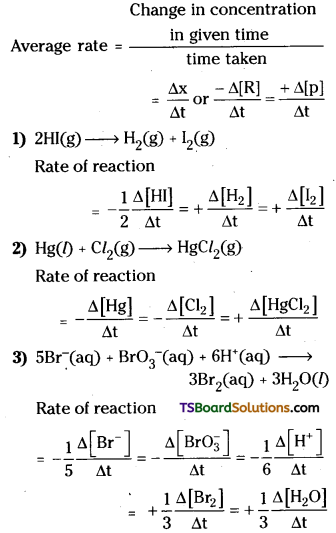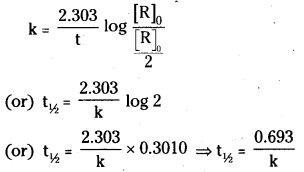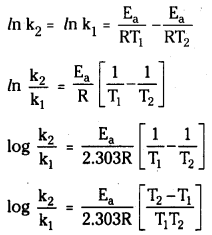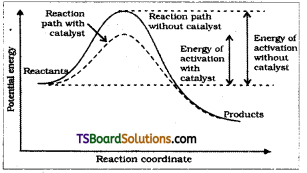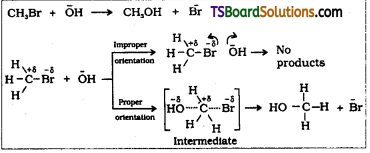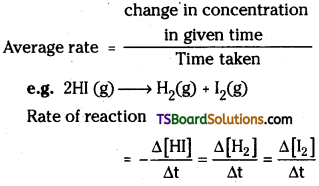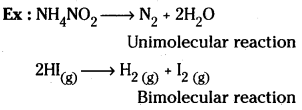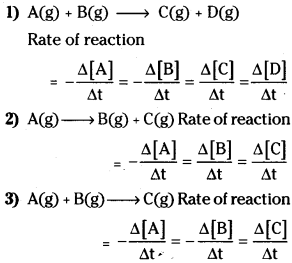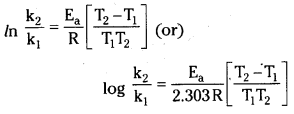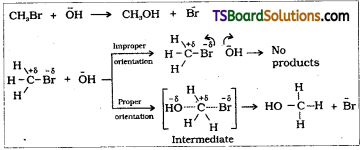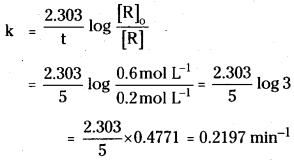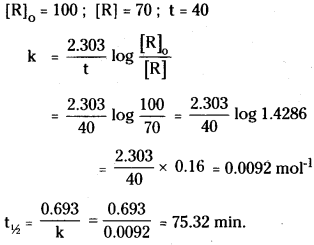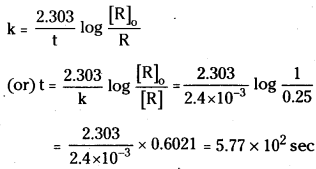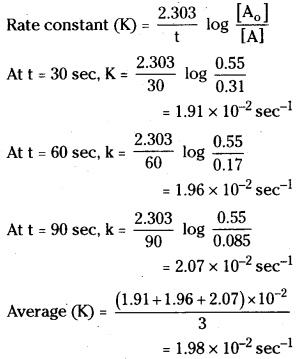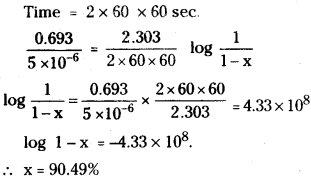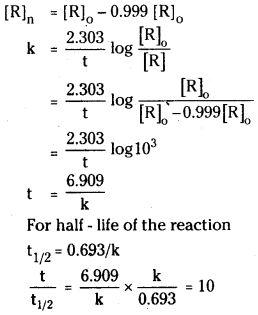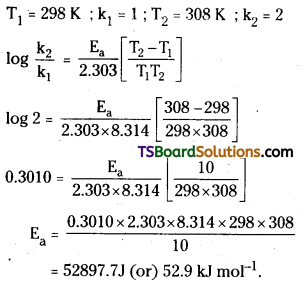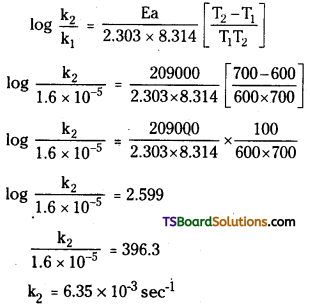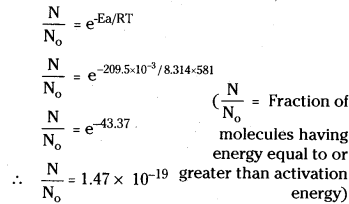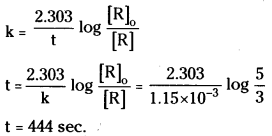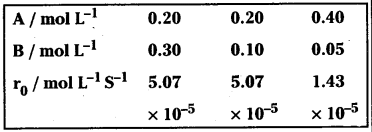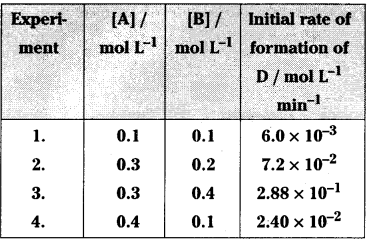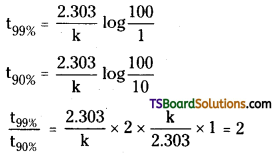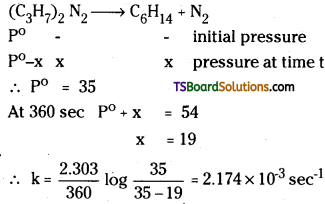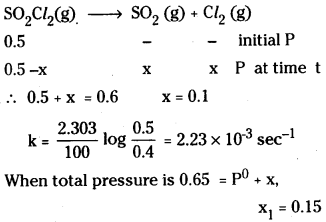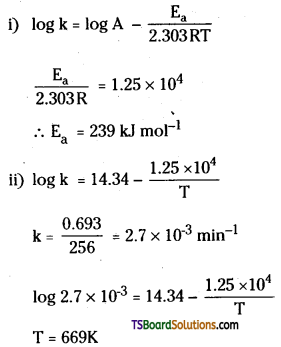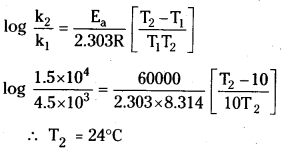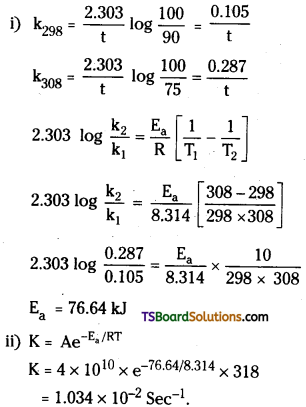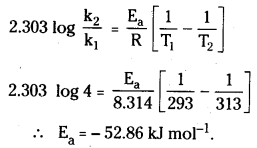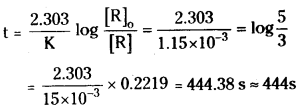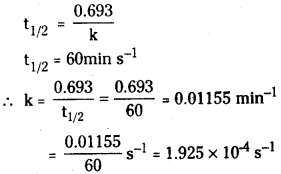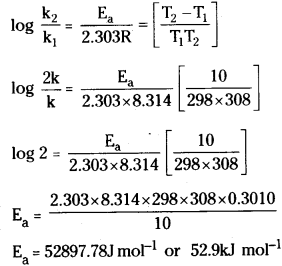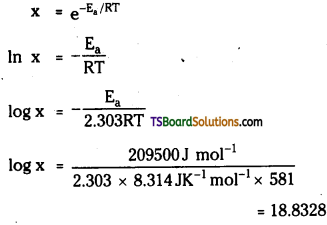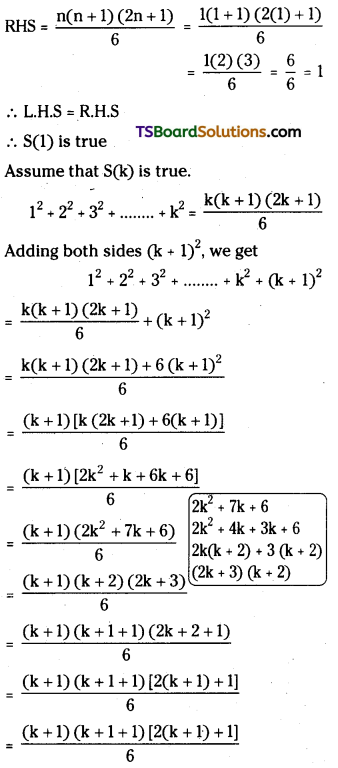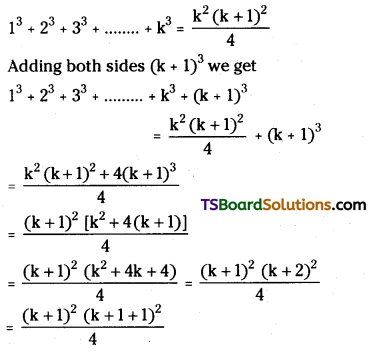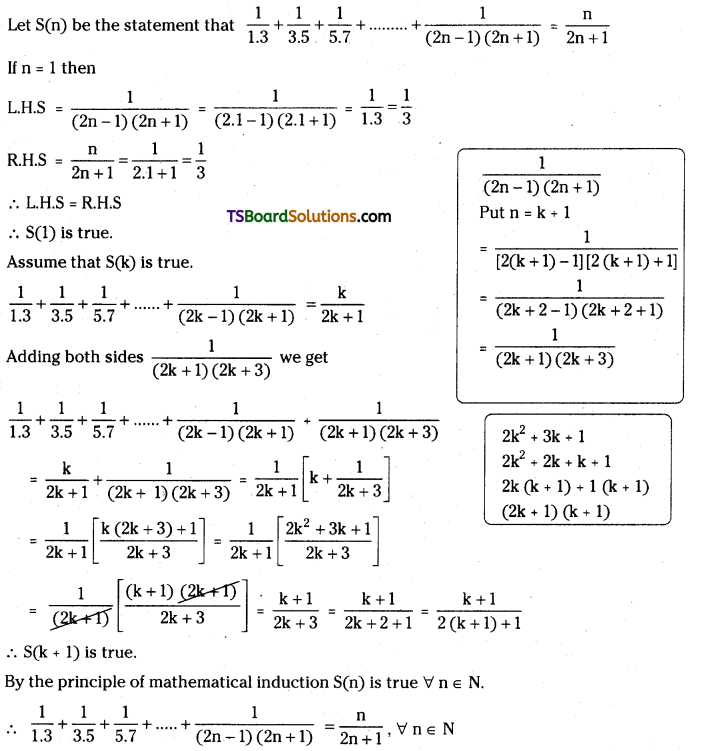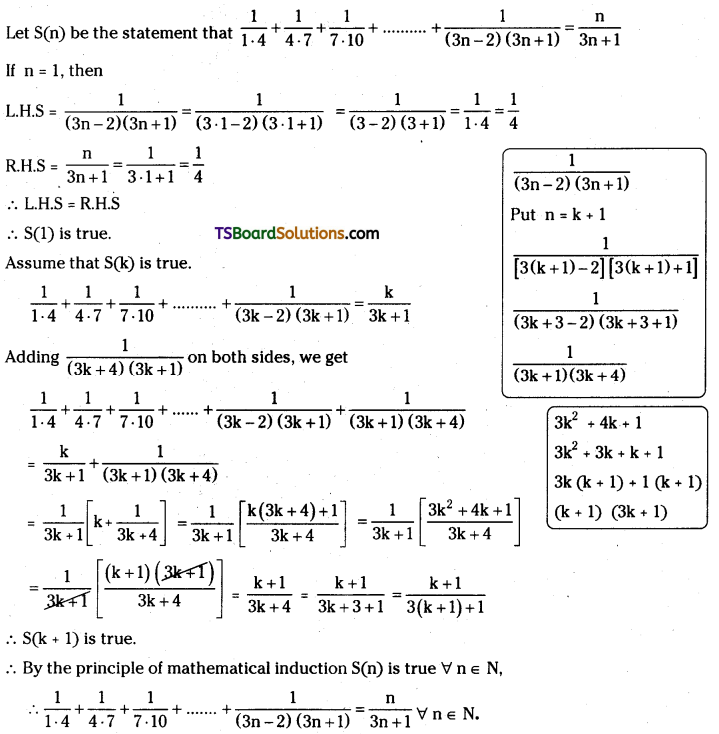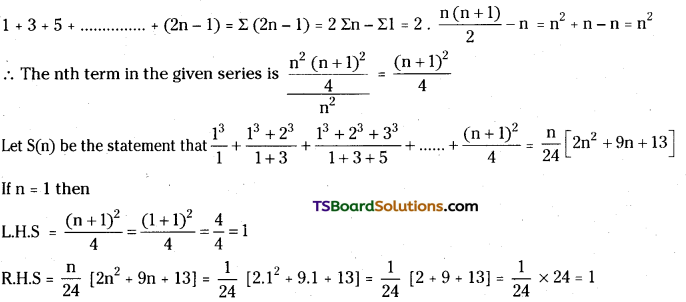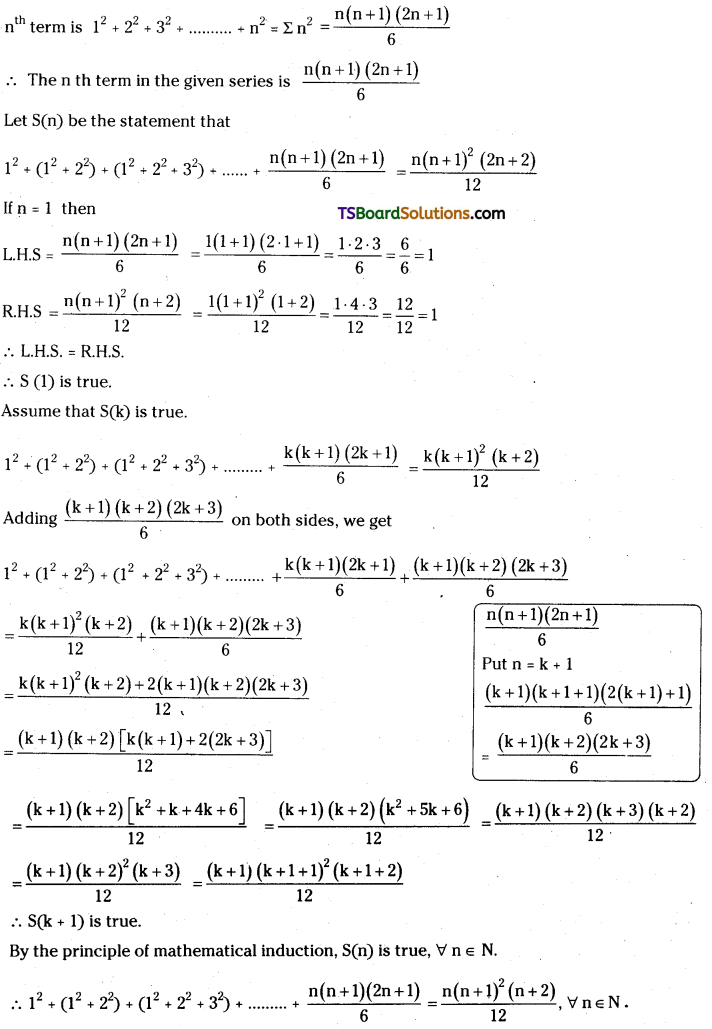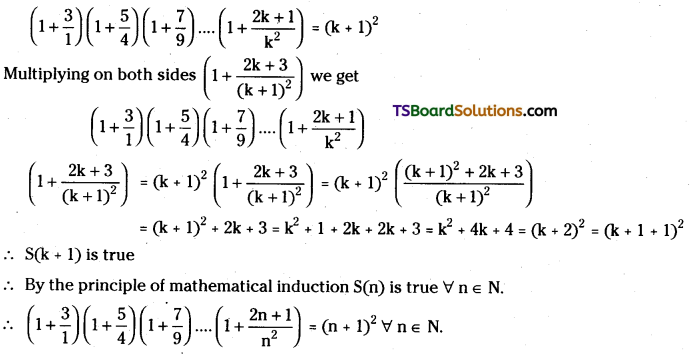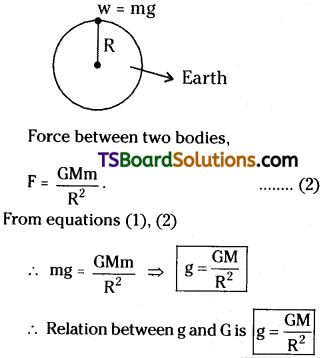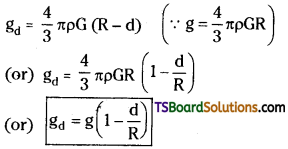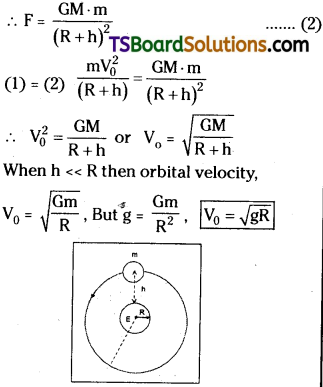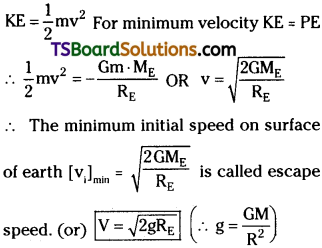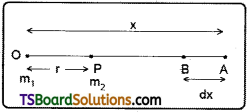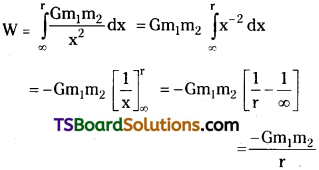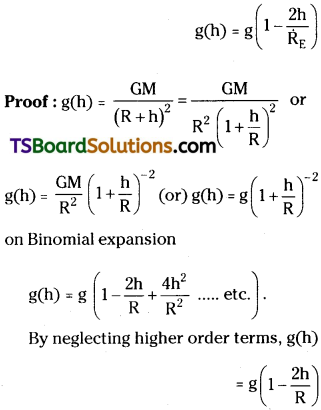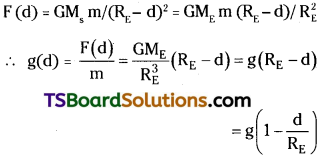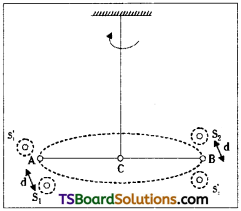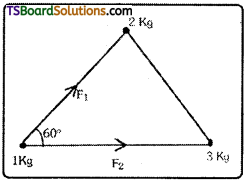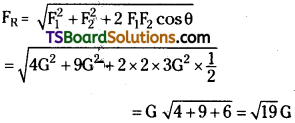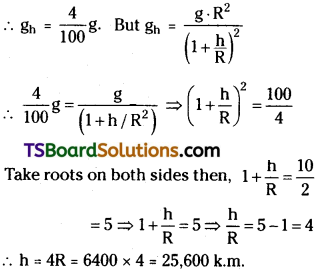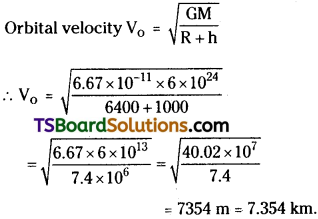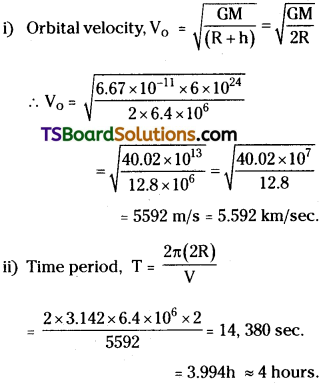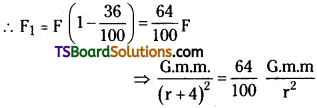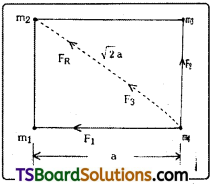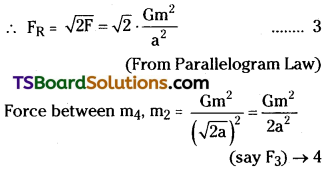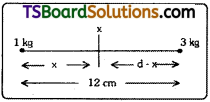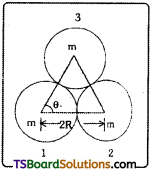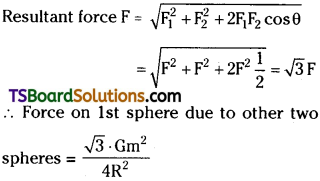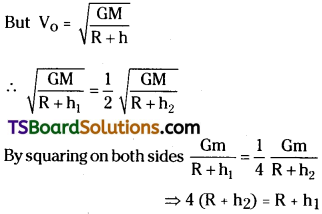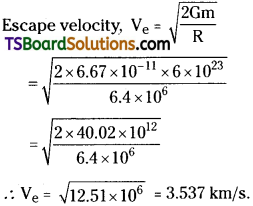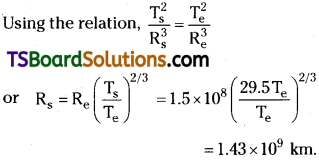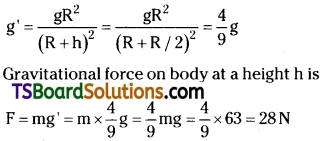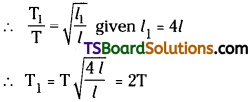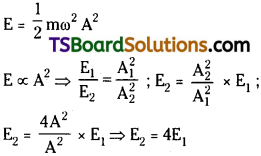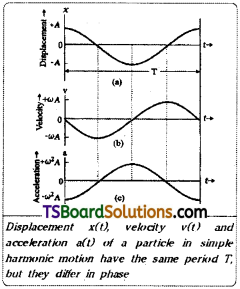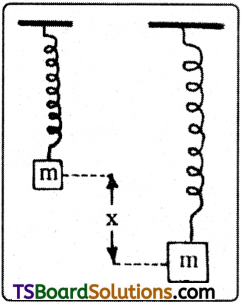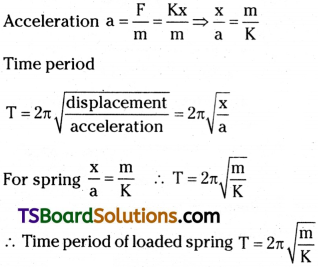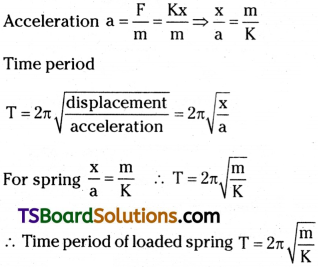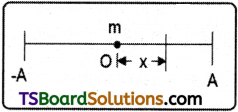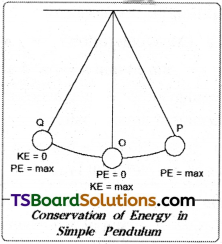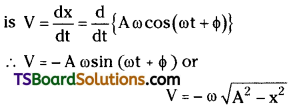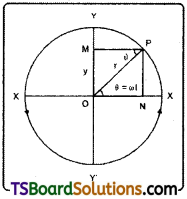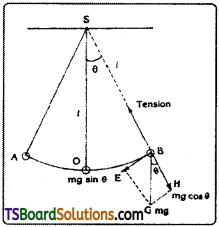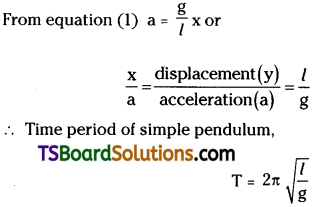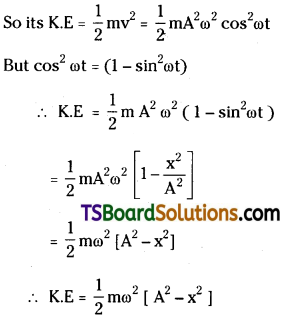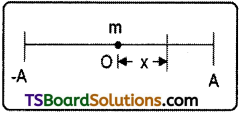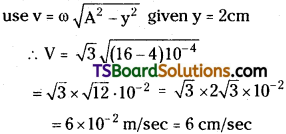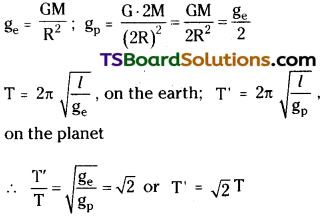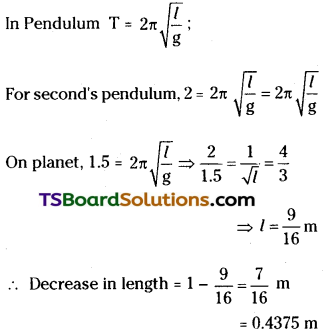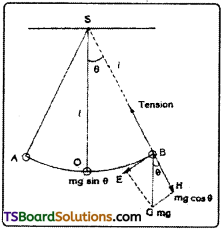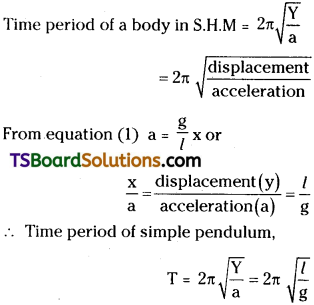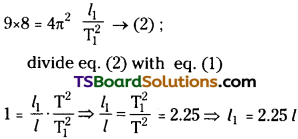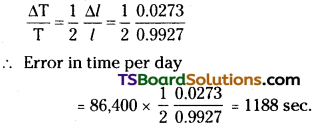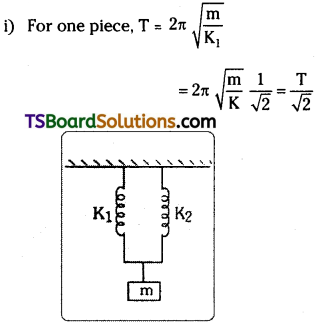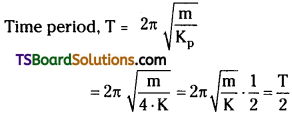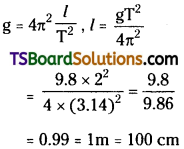Telangana TSBIE TS Inter 2nd Year English Study Material 4th Lesson Awake Textbook Questions and Answers.
TS Inter 2nd Year English Study Material 4th Lesson Awake
Annotations (Section A, Q.No. 2, Marks: 4)
Annotate the following in about 100 words each.
a) Who kneel in thy presence to serve and adore thee!
Introduction: This beautiful line is taken from the patriotic lyric”Awake” written by Sarojini Naidu. She is fondly remembered as the Nightingale of India. This is the last poem in the part of “The Broken wing: Songs of Love”.
Context and meaning: This poem is a fervent appeal for unity and action. That call is at once artistic and rhetoric. First, the nation is personified as our mother. All Indians become her children. The poet visualizes all children praying to he mother. They, entreat her to give them a chance to serve her and admire her glory. This kind of visualization is a powerful way to persuade everyone to tread that path.
Critical Comment: The poem expresses strong nationalistic feelings. It was written more than a century ago. Yet, it is very relevant today.
కవి పరిచయం : ఈ అందమైన వాక్యం సరోజినీ నాయుడు వ్రాసిన దేశభక్తి గీతం “మేల్కొను” నుండి తీసుకోబడింది. ఆమెను భారతదేశపు గానకోకిలగా ప్రేమగా గుర్తుంచుకుంటారు. “The Broken Wing: Songs of Love” లో ఇది చివరి కవిత.
సందర్భ౦ మరియు అర్థం : పద్య౦ ఐక్యత మరియు కార్యాచరణ కోసం తీవ్రమైన విజ్ఞప్తి. ఆ పిలుపు ఒకేసారి కళాత్మకంగా మరియు వాక్చాతుర్యంగా ఉంటుంది. మొదటగా, దేశం మన తల్లిగా వ్యక్తీకరించబడింది. భారతీయులందరూ ఆమె బిడ్డలయ్యారు. పిల్లలందరూ తల్లిని ప్రార్థిస్తున్నట్లు కవి దృశ్యమానం చేస్తుంది. ఆమెకు సేవ చేయడానికి మరియు ఆమె కీర్తిని మెచ్చుకునే అవకాశం ఇవ్వాలని వారు ఆమెను వేడుకుంటారు. ఈ రకమైన దృశ్యమానం ప్రతి ఒక్కరినీ ఆ మార్గంలో నడపడానికి ఒప్పించే శక్తివంతమైన మార్గం.
విమర్శ : బలమైన జాతీయ భావాలను తెలియజేస్తుంది ఈ పద్య౦. శతాబ్దపు కాలానికి ముందే ఇది వ్రాయబడింది. అయినప్పటికీ, ప్రస్తుతానికి చాలా సంబంధం కల్గి ఉంది. అది నేటికీ చాలా సందర్భోచితమైనది.
b) Awaken and sever the woes that enthral us (Revision Test – IV)
Introduction: This patriotic line is taken from the patriotic lyric, ” Awake” Written by Sarojini Naidu, the nightingale of India. This is the last poem of “The broken wings: Songs of Love”.
Context and meaning: It is a soul stirring plea for action and zenity. The woes of bondage are to be cut. Mother India should gain its glory gain and grow and glow. Hence, the children implore the mother to rouse them from their slumber and to cut off the ties of bondage in which they are bound at present their hands are to be purified by her so that they might be prompted to undertake more and more deed of victory and triumph.
Critical Comment: The poem expresses strong nationalistic feelings. It was written more than a century ago. Yet, it is very relevant today.
కవి పరిచయం : ఈ దేశభక్తిని తెలియజేయు వాక్యం దేశభక్తి గేయం. భారత గానకోకిల సరోజినీ నాయుడు వ్రాసిన “మేల్కొను” నుండి తీసుకోబడింది. “ది బ్రోకెన్ వింగ్: సాంగ్స్ ఆఫ్ లవ్” లో ఇది చివరి కావ్యం. ఈ పద్య౦.
సందర్భ౦ మరియు అర్థం : ఐక్యతను మరియు కార్యాచరణను ఇది మనస్సును కదిలించే కావ్యం. బానిస బాధలు తుంచివేయాలి. భరతమాత మరల తన కీర్తిని, ఎదుగుదలను మరియు కాంతి, వెలుగు పొందాలి. కాబట్టి భరతమాత బిడ్డలు, ప్రస్తుతం వారు బందీలై ఉన్న బానిస సంకెళ్ళను తుంచివేయుటకు ఆమెను నిద్రావస్థితి నుండి మేల్కొలపమని భరతమాతను ప్రార్థించుచున్నారు. విజయోన్ముకులు అవ్వటానికి, వారి చేతులను పవిత్రం చేయమని తల్లిని కోరుకుంటున్నారు.
విమర్శ: గట్టి జాతీయభావాలను ఈ పద్య౦ తెలియజేస్తుంది. ఒక శతాబ్దపు కాలానికి క్రితమే ఈ పద్య౦ వ్రాయబడింది. అయినప్పటికీ, ఈ రోజులకు బాగా సంబంధించింది.
![]()
c) Ne’er shall we fail thee, forsake thee or falter,
whose hearts are thy home and thy shield and thine altar
Introduction: These patriotic lines are taken from the patriotic lyric, “Awake”, written by Sarojini Naidu the nightingale of India. This is the last poem in the part of “The Broken wing: songs of Love”
Context and meaning: Here, the poetess says that the children of the mother land love her very much. They have a great devotion for their mother land. They are the true children they have inherited her pride, moral and spiritual strength. They want to preserve these qualities. The y will never fail to protect her. They will never desert her. Their hearts are the home of the mother. They are her shield with which they would protect her. They are her altar at which they would worship her. It is with her help that they will be set again in the forefront of glory.
Critical Comment: The poem expresses strong nationalistic feelings It was written more than a century ago. Yet it is very relevant today.
కవి పరిచయం : ఈ దేశభక్తి పంక్తులు భారత గానకోకిల సరోజినీ నాయుడుచే రచించబడిన “మేల్కొను” అను దేశభక్తి గేయం నుండి తీసుకొనబడింది. “The Broken Wing: Songs of Love” లో ఇది చివరి వాక్యం.
సందర్భ౦ మరియు అర్థం : ఇక్కడ, మాతృభూమి బిడ్డలు ఆమెను అమితంగా ప్రేమిస్తున్నారంటుంది కవయిత్రి. వారికి మాతృభూమిపట్ల గొప్ప భక్తి ఉంది. వారి ఆమె (భరతమాత) నిజమైన బిడ్డలు. భరతమాత గర్వం, హుందా, నీతి మరియు ఆధ్యాత్మిక బలాన్ని వారసత్వంగా వారు పొందారు. ఈ లక్షణాలను నిలుపుకోవాలనుకుంటున్నారు వారు. ఎప్పటికీ ఆమెను వదులుకోరు వారు. వారి హృదయాల్లో భరతమాత విలువైనది. వారు ఆమె రక్షణ కవచాలు ఆమెను రక్షించుకుంటారు. ఆమెను పూజించే పూజాపీఠం వారు ఆమె (ఖర్చులు) సహాయంతో వారు (భారతీయులు) ఆమెను మురళీ కీర్తి ప్రతిష్టలు ముందు నిలుపుతారు.
విమర్శ : ధృఢమైన జాతీయ భావాలను ప్రదర్శిస్తుంది ఈ పద్య౦. ఒక శతాబ్దకాలం క్రితమే వ్రాయబడింది ఈ పద్య౦. అయినప్పటికి
d) …………………. Hearken,
O queen and O goddess, we hail thee! (Revision Test – IV)
Introduction: These are the concluding lines of the patriotic lyric, “Awake” written by sarojini Naidu, the Nightingale of India. This is the last poem of “The Broken wing! Songs of Love”.
Context and meaning: Here, people of all Indian religions assure her chat they would serve her with devotion to the best of their ability. They call upon their great mother, their queen and their goddess to listen to their prayer and awake from her present slumber. Their fearless united and devoted efforts shall certainly be sufficient to free her from her present bondage.
Critical Comment: This lyric is a soul stirring call for unity and action. It expresses strong nationalistic feelings.
కవి పరిచయం : భారత గాన కోకిల సరోజినీ నాయుడిచే రచించబడిన “మేల్కొను” అను దేశభక్తి గేయంలోని ముగింపు పంక్తులు ఇవి “ది బ్రోకెన్ వింగ్ : సాంగ్స్ ఆఫ్” లో ఇది చివరి కావ్యం.
సందర్భ౦ మరియు అర్థం : ఇక్కడ, అన్ని భారతీయ మతాల ప్రజలు ఆమెను తమ శక్తి మేరకు భక్తితో సేవ చేస్తామని ఆమెకు భరోసా ఇస్తారు. వారు తమ గొప్పతల్లిని, వారి రాణిని మరియు వారి దేవతను తమ ప్రార్థనను వినమని మరియు ఆమె ప్రస్తుత నిద్ర నుండి మేల్కొలపమని పిలుపునిచ్చారు వారు. వారి నిర్భయమైన ఐక్యత మరియు అంకితమైన ప్రయత్నాలు ఆమె ప్రస్తుత బానిసత్వం నుండి ఆమెను విడిపించడానికి ఖచ్చితంగా సరిపోతాయి అంటారు.
విమర్శ : ఈ గీతం ఐక్యత మరియు కార్యచర్య కోసం ఒక ఆత్మను (మనస్సు) కదిలించే పిలుపు. ఇది బలమైన జాతీయ భావాలను వ్యక్తపరుస్తుంది.
Paragraph Questions & Answers (Section A, Q.No.4, Marks: 4)
Answer the following Questions in about 100 words
a) Substantiate the critical comment that the poem”Awake” is a patriotic lyric. (Revision Test – IV)
Answer:
Yes, Sarojini Naidu’s song”Awake’ has been acclaimed as a patriotic lyric. A lyric is poem. A single speaker expresses emotions and thoughts in it. It is noteworthy for its musical quality and rhythm. And its theme is losty. According to it, the poem, “Awake”, has all these qualities in abundance. It is rich in musical element. If expresses strong nationalistic feelings. Thus, the content is patriotic and lience noble. With its preformed theme and artistic and lyrical form the poem is very much entitled to be applauded as patriotic lyric. It is a touching call to all Indians for unity and action. People of all religions pledge to come together to guard their mother, queen and goddess. Hence, this is a patriotic lyric.
అవును, సరోజినీ నాయుడు యొక్క పాట “మేల్కొను” పాట దేశభక్తి గీతంగా ప్రశంసించబడింది. గీతం అనేది ఒక పద్య౦. ఒకే వక్త దానిలో భావోద్వేగాలను మరియు ఆలోచనలను వ్యక్తపరుస్తారు. ఇందులో. ఇది దాని సంగీత నాణ్యత మరియు లయకు ముఖ్యమైంది. మరియు దీని ఇతివృత్తం ఉన్నతమైంది. దీనికి అణుగుణంగా, ఈ పద్య౦ ‘మేల్కొను” ఈ లక్షణాలన్నీ పుష్కలంగా ఉన్నాయి. ఇది సంగీత లక్షణంలో సమృద్ధిగా ఉంటుంది.
ఇది బలమైన జాతీయ భావాలను వ్యక్తపరుస్తుంది. అందువలన, ఇతివృత్తం దేశభక్తి మరియు సాహిత్య రూపంతో ఈ పద్య౦ దేశభక్తి గీతంగా ప్రశంసించబడటానికి చాలా అర్హతగల్గినది. ఐక్యత మరియు కార్యచరణ కోసం భారతీయులందరికీ ఇది హత్తుకునే పిలుపు. అన్ని మతాల ప్రజలు తమ తల్లి, రాణి మరియు దేవతను కోపాడుకోవడానికి కలిసి వస్తామని ప్రతిజ్ఞ చేస్తారు. అందుకే, ఇది దేశభక్తి గీతం.
![]()
b) What do the children implore the mother in the poem, “Awake” ?
Answer:
The patriotic lyric, “Awake” is written by Sarojini Naidu, The nightingale of India. The poem is a servent appeal for unity and action. The nation is personified as our mother. All Indians becomes her children. The poet visualizes all children praying to the mother. They are invoking her to rise from her sound and long sleep and to bless them. So that they may succeed in their holy object of setting her free from the chain of slavery under the British rule. Thus, they implore her to awake from her sleep. They are ready to serve her. It is a soul storing plea for action and unity. The poem stands out for its strong nationalistic feelings.
దేశభక్తిగేయం “మేల్కొను” భారత గాన కోకిల, సరోజినీ నాయుడుచే రచింపబడింది. ఈ పద్య౦ ఐక్యత మరియు కార్యచరణ కోసం తీవ్రమైన విజ్ఞప్తి. దేశం మన తల్లిగా వర్తించబడింది. భారతీయులందరూ ఆమె బిడ్డలయ్యారు. పిల్లందరూ తల్లిని ప్రార్థిస్తున్నట్లు కవి దృశ్యమానం చేస్తారు. బ్రిటీష్ పాలనలో బానిసత్య సంకెళ్ళు నుండి ఆమెను విడిపించే వారి పవిత్రమైన లక్ష్యంలో వారు విజయం సాధించాలని ఆమె దీర్ఘ, ఘాడమైన నిద్ర నుండి లేచి వారిని ఆశీర్వదించమని ప్రార్థిస్తున్నారు. అందువలన, వారు ఆమెను నిద్ర నుండి మేల్కొనమని వేడుకుంటున్నారు. వారు ఆమెకు సేవ చేయడానికి సిద్ధంగా ఉన్నారు. ఇది కార్యాచరణ మరియు ఐక్యత కోసం ఆత్మను, మనస్సును కదిలించే అభ్యర్ధన. ఈ పద్య౦దాని బలమైన, గట్టి, జాతీయవాద భావాలకు చిహ్నంగా నిలుస్తుంది.
c) How do Indians plan to set their mother again in the forefront of glory? (Revision Test – IV)
Answer:
The patriotic lyric, “Awake” is written by Sarojini Naidu, The nightingale of India. According to the poetess, the children of the motherland are invoking her to rise from her sound and long sleep and bless them so that they succeed in their holy object of setting her free from the chain of slavery under, the British rule. The poetess says that her children love her very much. They have a great devotion for their motherland.
They are her true children. They have inherited her pride, moral and spiritual strength they want to preserve these qualities. They will never fail to protect her. They will never desert her. Their hearts are the home of the mother. They are moreover her shield and her alfar. It is with her help that they will be set again in the forefront of glory. All medians should forget their mutual differences for the attainment of freedom and rise against British tyranny.
దేశభక్తి గీతం ‘మేల్కొను’ భారత గాన కోకిల సరోజినీ నాయుడుచే రచింపబడింది. రచయిత ఉద్దేశం, భరతమాత బిడ్డలు, బ్రిటీషు పాలనలో బానిస సంకెళ్ళ నుండి భరతమాతను విడిపిచు వారి పవిత్రమైన లక్ష్యంలో వారు విజయం సాధించాలని ఆమె ఘాడమైన, సుదీర్ఘ నిద్ర నుండి లేచి వారిని ఆశీర్వదించమని ప్రార్థిస్తున్నారు. వారు ఆమెను అమితంగా ప్రేమిస్తున్నారని కవయిత్రి చెప్తుంది. వారు ఆమె నిజమైన బిడ్డలు. ఆమె హుందాను, నీతి మరియు ఆధ్యాత్మిక శక్తిని వారు హక్కుగా పొందినారు. ఈ లక్షణాలను వారు నిలుపుతారు.
ఆమెను రక్షించుటలో వారు ఎన్నడూ విఫలమవ్వరు. ఎన్నడూ ఆమెను వదులుకోరువారు. తల్లికి వారి హృదయాల్లో నివాసం ఏర్పరిచారు. వారు, ఆత్మీయులుగా, ఆమె రక్షణ కవచం మరియు పూజాపీఠం. ఆమె సహాయంతో వారు ఆమెను కీర్తి, ప్రతిష్టల ముందు తిరిగి ఉంచుతారు. బ్రిటీషు వారి క్రూరత్వం, నిరంకుశంకు వ్యతిరేకంగా మరియు స్వాతంత్య్రం సాధించుటకును భారతీయులందరూ వారే పరస్పర వ్యత్యాసాలు మరచి పోవాలి అంటుంది ఐకమత్యంతో పోరాడాలి.
d) What do the children of all creeds promise their mother separately and collectively?
Answer:
The patriotic lyric, “Awake” is written by Sarojini Naidu, the nightingale of India. The poetess says that the children of old creeds promise their mother that they would serve her with devotion to the best of their ability. The Hindus Assure her that they will worship her usual.
The parsees will dedicate the fire of hope burning in their hearts to her service. The muslims will defend her with the sword of their love. The christians convince her that they will show the same devotion and faith in her as they have in Jesus and Mary.
Having assured her separately of their devotion, love and faith followers of different religions call upon their great mother, their queen and their goddess to listen to their prayer and rise from her current sleep they promise her that their united and collective efforts will succeed to set her free from the chains of bondage.
దేశభక్తి గీతం ‘మేల్కొను’ భారత గాన కోకిలచే రచింపబడింది. వారి శక్తి కొలది అంకిత భావంతో భరతమాతకు సేవచేస్తామని, ఆమెకై పోరాడతామని, అన్ని మతాల వారు వారి తల్లి (భరతమాత)కి ప్రతిజ్ఞ చేసారని కవి చెప్తుంది. హిందువులు వారి సహజమైన పద్ధతిలోనే పూలతో ఆమెను పూజిస్తామని చెప్తున్నారు. ఆమె సేవకు పార్శీనులు వారి హృదయాల్లోని ఆశాజ్యోతిని ఆమెకు అంకితం చేస్తామన్నారు. వారి ప్రేమ భక్తి ఖడ్గంతో ఆమెను కాపాడుకుంటామని ముస్లీంలు మారుస్తున్నారు. క్రీస్తు మరియు మేరిమాత పలు చూపిన విశ్వాసం, భక్తినే ఆమెపట్ల చూపుతామంటున్నారు.
క్రిస్టియన్లు వారి భక్తి ప్రేమ మరియు వివ్వాసం గురించి ఆమెకు విడివిడిగా హామీ ఇవ్వడంతో, వివిధ మతాల అనుచరులు తమ గొప్ప తల్లిని వారి రాణిని మరియు దేవతను తమ ప్రార్థనను వినాలని మరియు ఆమె ప్రస్తుత నిద్ర నుండి లేవాలని పిలుపునిచ్చారు. ఆమెను భానిస బంధాల నుండి విముక్తి చేయడానికి తమ ఐక్య మరియు సమిష్టి ప్రయత్నాలు సఫలమవుతాయని వారు ఆమెకు (భరతమాతకు) హామీఇచ్చారు.
Awake Summary in English
About Author

Sarojini Naidu (13 February 1879 2 March 1949)was an Indian political activist and poet. A proponent of civil rights, women’s emancipation, and anti-imperialistic ideas, she was an important person in India’s struggle for independence from colonial rule. Naidu’s work as a poet earned her the sobriquet ‘the Nightingale of India’, or ‘Bharat Kokila’ by Mahatma Gandhi because of colour, imagery and lyrical quality of her poetry.
Few of his notable works in English:
1905: The Golden Threshold, London: William Heineman[18]
1917: The Broken Wing: Songs of Love, Death and the Spring[19]
1961: The Feather of the Dawn, edited by Padmaja Naidu, Bombay: Asia Publishing House
The poem,”Awake” is written by Sarojini Naidu, the Nightingale of India. It is a patriotic Song. It is the last poem in the first section of “The Broken wing: Songs of Love”. It is dedicated to Mohammad Ali Jinnah, a trusted friend of Sarojini Naidu, It was revived at the Indian National Congress Meetings in Bombay, 1915. In this poem, the worshippers of all Indian religions are brought together to the alfar of mother India to hail her as a “Queen” and a “Goddess”.
It conveys the idea that mother India could be awakened from her slumber and emancipated from her bondage by the united efforts of her sons. To get Independence from the British rule Indians must forget their religions and communal differences and rise like one against the British tyranny. It is a call for unity and action.
In the first stanza, the poetess speaks on behalf of the children of India who implore her to awake from her sleep and who worship her and are ready to serve her. She must lead their prays the dark night of slavery is now about with the hope of freedom. She must awake and cut the chains of slavery which cause so much grief to her children. Their hands will be purified by her blessings. So, that their holy cause may triumph.
They are the true children of their beloved Bharata Mata, and they have inherited her own pride and her own moral and spiritual courage. They will never fail to protect her. Thus will never desert her and they will ever sing the story of her greatness and glory. Their united efforts make her great and stories once again. Such as the dedication of her children and she must respond to their call.
In the next four lines, the followers of different Indian religions assure her that they would serve her with devotion to the best of their ability. The Hindus assure her that they will always worship her as they have been doing so far the parsees assure her that the fire of hope burning on their hearts will be dedicated to her service. The musalmans assure her that they would defend her with the sword of their love. The Christians assure her that they will show the same devotion and faith in their as they have in Jesus and Mary.
In the last two lines, having assured her separately of their devotion and service, the followers of all the different religions call upon their great mother, their green and their goddess to listen to their prayer and awake from her present slumber. Their fearless united and devoted efforts shall certainly be sufficient to free her from her present bondage. The lyrics a soul – stirring call for unity and action. It came from the heart of the poetess and so goes straight to the hearts of her readers.
Awake Summary in Telugu
Note: This summary is only meant for Lesson Reference, not for examination purpose
“మేల్కొను” అను కావ్యం భారత గానకోకిల సరోజినీ నాయుడుచే రచింపబడింది. ఇది దేశభక్తి గీతం “The Broken Wing: Songs of Love” యొక్క మొదటి విభాగంలో ఇది చివరి పద్య౦. ఇది సరోజినీ నాయుడు యొక్క నమ్మకమైన స్నేహితుడు, మహ్మద్ ఆలీ జిన్నా కు అంకితం చేయబడింది. ఇవి 1915లో బోంబేలో జరిగిన జాతీయ కాంగ్రెస్ సమావేశంలో పఠించబడింది. ఈ పద్య౦లో అన్ని భారతీయ మతాల ఆరాధనలు ఆమెను (భరతమాతను) రాణిగా మరియు దేవతగా కీర్తించడానికి భారతమాత యొక్క బలిపీఠం వద్దకు తీసుకురాబడ్డారు.
ఆమె కుమారుల పెక్కు ప్రయత్నాల ద్వారా భారతమాత తను నిద్ర నుండి మేల్కొనబడుతుందని మరియు ఆమె బానిసత్వం నుండి విముక్తి పొందగలదనే ఆలోచనను ఇది తెలియజేస్తుంది. బ్రిటీషు పాలన నుండి స్వాతంత్ర్యం పొందడానికి భారతీయులు తమ మతాలు మరియు మతభేదాలను మరచిపోయి బ్రిటీష్ దౌర్జన్యానికి వ్యతిరేఖంగా ఒక్కటిగా ఎదగాలి. ఐక్యత మరియు కార్యచరణకు ఇది పిలుపు.
మొదటి చరణంలో, కవయిత్రి తన నిద్ర నుండి మేల్కొనమని మరియు ఆమెను ఆరాధించి మరియు ఆమెకు సేవచేయడానికి సిద్ధంగా ఉన్న భారతమాత ముద్దుబిడ్డల తరుపున మాట్లాడుతుంది. ఆమె వారి ప్రార్థనను వినాలి. బానిసత్వం యొక్క చీకటి రాత్రి ఇప్పుడు స్వేచ్ఛ, స్వాతంత్య్రపు యొక్క ఆశతో ఉంది. ఆమె మేల్కొని తన పిల్లలకు చాలా దుఃఖం కలిగించే బానిసత్వపు గొలుసులను తెంచుకోవాలి. ఆమె ఆశీర్వాదం ద్వారా వారి చేతులు శుద్ధి చేయబడతాయి, తద్వారా వారి పవిత్రమైన కారణాన్ని విజయవంతం చేస్తారు.
ప్రియమైన భరతమాత యొక్క నిజమైన బిడ్డలు వారు మరియు ఆమె హుందా మరియు ఆమె నీతివంతమైన మరియు ఆధ్యాత్మిక ధైర్యాన్ని వారసత్వంగా వారు పునికి పుచ్చుకున్నారు. ఆమెను రక్షించుటలో వారు ఎన్నడూ విఫలమవ్వరు. వారు ఆమెను ఎన్నడూ త్యజించరు మరియు ఆమె కీర్తి మరియు గొప్పతనం గురించి ఎల్లప్పుడూ స్తుతిస్తారు. వారి యొక్క పెక్కు ప్రయత్నాలు తిరిగి ఆమెను కీర్తివంతం చేస్తాయి. అలాంటి అంకితభావానికి, ఆమె వారి పిలుపుకి ప్రతిస్పందించాలి.
తర్వాత నాల్గు శ్రేణుల్లో, వివిధ భారతీయ మతాల ఆరాధకులు వారి శక్తికొలది అంకితభావంతో ఆమెకు సేవ చేస్తామని నమ్మకంగా చెప్తున్నారు. ఇప్పటి వరకూ ఎలా పూజించారో అలానే ఆమెను ఎల్లప్పుడూ పూజిస్తారని నొక్కి చెప్తున్నారు హిందువులు. ఆమె సేవకు, పాటకు వారి హృదయాల్లోని ఆశాజ్యోతిని ఆమెకు అంకితం చేస్తామన్నారు. వారి ప్రేమ, భక్తి ఖడ్గంతో ఆమెను కాపాడుకుంటామని ముస్లీములు నొక్కి చెప్తున్నారు. క్రీస్తు మరియు మేరిమాత పట్ల చూపిన విశ్వాసం, భక్తినే ఆమె పట్ల చూపుతున్నామంటున్నారు క్రిష్టియన్లు.
చివరి రెండు శ్రేణుల్లో, వారి భక్తి, ప్రేమ, విశ్వాసం గురించి ఆమెకు విడివిడిగా హామీ ఇవ్వడంతో వివిధ మతాల ఆరాధనలు తమ గొప్ప తల్లివి, వారి రాణిని మరియు దేవతను తమ ప్రార్థనను వినాలని మరియు ఆమె ప్రస్తుత నిద్ర నుండి లేవాలని పిలుపునిచ్చారు. ప్రస్తుత బానిసత్వం నుండి ఆమెను విముక్తి చేయుటకు, వారి నిర్భయ ఐక్య మరియు అంకిత ప్రయత్నాలు సరిపోతాయి కాబట్టి, ఇవి కార్యచరణ మరియు ఐక్యత కోసం ఇది మనస్సును కరిగించే అభ్యర్ధన. ఇది కవయిత్రి మనస్సు నుండి వస్తుంది మరియు పాఠకుల హృదయాలకి నేరుగా వెళ్ళింది.
![]()
Awake Summary in Hindi
Note: This summary is only meant for Lesson Reference, not for examination purpose
‘अवेक’ नामक कविता भारत को किला सरोजिनी नायडु से लिखी गई है । वह देशभक्ति गीत है । यह “द ब्रोकेन विंग’ : ‘सांग्स ऑफ़ लव’ के अंतिम खंट की आखनी कविता है । यह सरोजिनी नायडु के विश्वासनीय मित्र मुहम्मद अली जिन्ना को समर्पित है । 1915 में बंबई में भारतीय कांग्रेस की बैठक में गाया गया । इस कविता में भारत माता को रानी और देवता के रूप में परिवर्तितकर उसे अभिवादन करने के लिए भारतीय सभी धर्मों के उपासकों को एकता में लाया गया ।
यह इस विचार को व्यक्त करता है कि भारतमाता को नींद से जगाया जा सके और आपनी संतानों के सम्मिलित प्रयास से अपने दास्य बंधन से मुक्त किया जा सके । ब्रिटिशशासन से स्वतंत्रता प्राप्त करने के लिए । भारतीयों को अपने धर्मों, सांप्रदायिक संघर्ष करना चाहिए । यह एकता और क्रिया का आहवान है ।
परले छंद में, कवयित्री भारत के बच्चों की ओर से कहती हैं, जो भारत माता के उसकी नींद से जगाते हैं, जो उसकी पूजा करते हैं, और जो उसकी सेवा करने तैयार होते हैं । दासता का घोर अंधकार को दूर करने और स्वतंत्रता की आशा करने के लिए उसे बच्चों को बहुत परेषानी होती है । उसके आशईर्वात से उसके बच्चों के बहुत परेशानी होती है । उसके आशीर्वाद से उसके बच्चों के हाथ शुद्ध हो जाएँगे ताकि उनके पवित्र उद्देश्य की निजय हो सके ।
वे अपने प्यारी भारढकतमाता के सच्चे बच्चे हैं ओर उनमें उसका अहम अभिमान है और उसके नैतिक मूल्य हैं और आध्यात्मिक साहस है। उसकी रक्षा में वे कभी असफल नहीं होते । वे उसे कभी नहीं छोडेंगे। वे उसकी महानता और महिमा की कहानी गाएँके । उनके सम्मिलित प्रयास फिरसे उसकी महानता और चमक प्रदान करते हैं । उसकी संतानों का समर्पण एसा ही है । उसे उनके निमंत्रण की प्रतिक्रिया दिखानी चाहिए ।
यह गीत एकता और प्रतिक्रिया की आत्म प्रेरित पुकार है । यह कवियत्री के हृदय से निकला है और उसके पाठकों के हृदयों में सीधा घुसता हैं ।
Meanings and Explanations
waken (v) (వెయికన్)/ weɪ.kən/ : wake from sleep : నిద్ర నుండి మేలు కొలుపు, भारतीय
thy(adj) / (మీ యొక్క)/ ðaɪ/ : your : మీ యొక్క (old and poetic form of you), प्रार्थना करना, विनती करना
implore(v)/(ఇంప్లో (ర్))/ɪm’plɔ:r/ : request, plead: విన్నవించుకొను : तु, तुम
thee (pron)/ (దీ)/θri:/ : you : మిమ్ము (old from ‘you’) ; घुटने टेकना
kneel (v)/ (నీల్) /ni:l/ : rest on one’s bent knees : మోకాళ్ళను నేలకు ఆనించి వాని ఆధారంగా కూర్చొను, (భక్తిని సూచిస్తూ ), पूजा करना, प्रेम करना
adore (v) (అడో(ర్)) /ədɔ:r/ : worship; ఆరాధించు, పూజించు, शरमाना, उत्साह से लाल होना
![]()
aflush(adj) /(అప్లష్)/ə’fl\(\Lambda \int\) : red with excitement ; ఆనందంతో ఎర్రబారిన : बंधन, गुलामी
morrow(n)/ (మోర ఉ)/ ‘mɒr.əʊ/ : tomorrow (poetic form) : काटना, भागों में बाँटना
thou (pron)/ (దౌ) //ðaʊ / : మీరు, दुःख, बाधाएँ
bondage (n)/ (బొండిజ్)/’bɒn.dɪdʒ/ : Slavery : బానిసత్యము; బంధము, गुलाम बनाना, अधीनस्थ बनाना, विनम्र बनाना
sever(n) / (సెవ(ర్)) /’sev.ər/ : cut, tear : కోసివేయు; త్రుంచు ; पवित्र बनाना
woes(n-pl): (వఉజ్)) : troubles /wəʊz/: కష్టములు, शानदार जीत
enthral(v)(also-enthrall)(ఇన్ త్రోల్ ) : /ɪn’θrɔ:l/ :make slaves ; బానిసలుగా చేయు ; bound ; బంధించు, निकट भविष्य में हम उसे हासिल करते हैं ।
hallow (v) : (హ్యాల ఉ) /’hæl.əʊ/ : sanctify; make pious : పవిత్రము చేయు, अधिकार के रूप में कुछ लेना था प्राप्त करना
triumphs(n-pl)/ (టై అమ్ ఫ్ జ్) /’traɪ.əmf/ : successes : విజయములు, कई अलग- अलग प्रकार के :
thine (pron)/(దైన్)/ ðaɪn/ : your’s (old form) మీవారము ; మీవి, गर्व – प्रसन्न या संतुष्ट होने की भावना); व्यकित-निष्ठा
inherit(v)/ (ఇన్ హెరిట్)/ɪn’her.ɪt/ : receive something as a right : వారసత్వముగా, హక్కుగా పొందు ; त्यागः छोड़ देना, छूटना
manifold(adj) : (మ్యానిఫ ఉల్డ్ )/(mæn.ɪ.fəʊld/ : of various types; हिलना, असफल होना
forsake(v)/(ఫ(ర్)సె ఇక్) /fɔ:seɪk/ : leave: వదిలివేయు, सुरक्षात्मक हिस्सा, बचाव की बात
falter (y)! (ఫ(ర్)సె ఇక్)/’fɒl.tər/ : fail : విఫలమగు, తప్పచేయు, स्तेमाल की जानेवाली एक सपाट संरचना
shield (n) (ఫోల్లట (ర్))/ʃi:ld/ : something that protects : ఆదారణంగా ఉండునది, महान राष्ट्रों की प्रथम पंक्ति में
altar(n) (షీల్ డ్ ) / ɔ:l.tə(r)/ : pieous place in temples : గర్భ గుడి పవిత్ర స్థలము, ताज पहनाय
dauntless (adj) / (డోంట్ లస్) /dɔ:nt.ləs/ : fearless : నిర్భయంగా, विश्वास, भरोसा
![]()
avails (v) / (అవె ఇల్)/ ‘əveɪl/ : serve : assist : సేవించు, సహాయపడు, निर्भय भक्ति
hearken (v) / (హా (ర్)కన్) / ‘ha:kən/ : listen విను, सुनाना
hail (v) (హెయిల్) /heɪl/ : call, salute : పిలుచు, గౌరవించు, स्वागत, निमंत्रण
